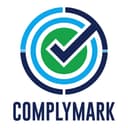The Ultimate Guide to Secure Data Destruction
When retiring IT equipment, proper data destruction is not just a best practice—it's a legal requirement in many industries. This comprehensive guide will walk you through everything you need to know.
Why Data Destruction Matters
Legal and Regulatory Requirements
Many regulations require secure data destruction:
- HIPAA - Healthcare data protection
- GDPR - European data privacy
- SOX - Financial data compliance
- FACTA - Consumer credit information
Business Risks
Improper data disposal can lead to:
- Data breaches and identity theft
- Regulatory fines and penalties
- Reputation damage
- Loss of customer trust
Data Destruction Methods
Software-Based Wiping
Pros:
- Cost-effective
- Environmentally friendly (enables reuse)
- Certified and auditable
Cons:
- Requires functional hardware
- Time-consuming for large volumes
Physical Destruction
Pros:
- 100% guaranteed data destruction
- Quick process
- Works on damaged devices
Cons:
- Prevents reuse
- Environmental impact
- Higher cost per device
Best Practices
1. Inventory All Devices
Create a comprehensive list of all IT assets containing data:
- Computers and laptops
- Smartphones and tablets
- Hard drives and SSDs
- USB drives and SD cards
- Copiers and printers (with hard drives)
- Backup tapes
2. Classify Data Sensitivity
Determine the appropriate destruction method based on data classification:
- Public: Standard deletion
- Internal: Single-pass wipe
- Confidential: Multi-pass wipe
- Restricted: Physical destruction
3. Use Certified Services
Look for certifications like:
- NAID AAA Certification - Industry standard for data destruction
- R2 or e-Stewards - Responsible recycling
- ISO 27001 - Information security management
4. Document Everything
Maintain detailed records including:
- Asset serial numbers
- Destruction method used
- Date and time of destruction
- Certificate of destruction
- Chain of custody documentation
Working with ComplyMark
Our certified data destruction process includes:
- Secure Pickup - Scheduled collection with chain of custody
- Certified Wiping - DOD 5220.22-M standard multi-pass wipe
- Physical Destruction - For devices that can't be wiped
- Documentation - Detailed certificate of destruction
- Recycling - Responsible disposal of materials
Conclusion
Secure data destruction is a critical component of IT asset disposal. By following these best practices and working with certified professionals, you can protect your organization from data breaches while supporting environmental sustainability.
Ready to schedule secure data destruction? Contact our team today for a free consultation.
